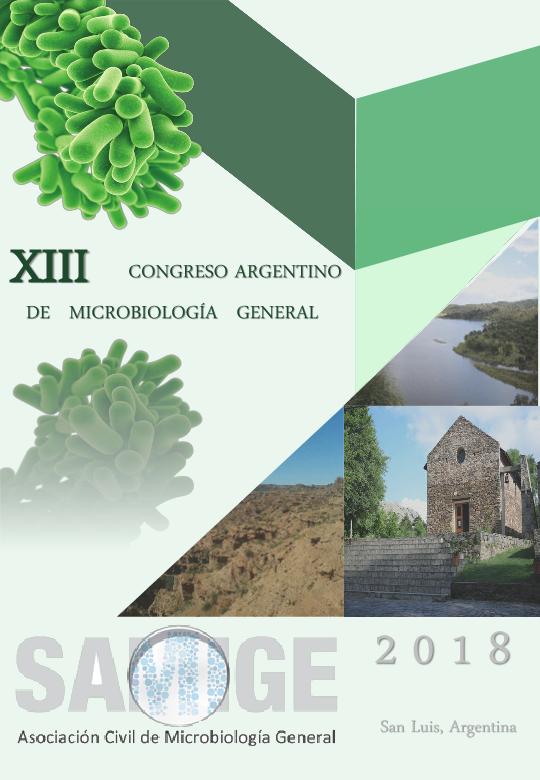Evento
Candida albicans planktonic and sessile cells treated with biosynthesized silver nanoparticles
Galera, Ivana Laura Delia; Quinteros, Melisa de Los Ángeles ; Páez, Paulina Laura
; Páez, Paulina Laura ; Paraje, María Gabriela
; Paraje, María Gabriela
 ; Páez, Paulina Laura
; Páez, Paulina Laura ; Paraje, María Gabriela
; Paraje, María Gabriela
Tipo del evento:
Conferencia
Nombre del evento:
XIII Congreso Argentino de Microbiología General
Fecha del evento:
08/08/2018
Institución Organizadora:
Asociación Civil de Microbiología General;
Título del Libro:
XIII Congreso Argentino de Microbiología General
Editorial:
Asociación Civil de Microbiología General
Idioma:
Inglés
Clasificación temática:
Resumen
Candida albicans is anormal commensal of the gastrointestinal microbiota in healthy individuals; however, as an opportunistic pathogen, is the most common etiological agent of candidiasis. C.albicans has the ability to form biofilms and morphogenetic conversions between yeast and hyphal morphologies contribute to biofilm development and representan essential virulence factor. These attached communities of cells are surrounded by a protective exopolymeric matrix that effectively shelters Candida against the action of antifungals (ATFs). As fungi are eukaryotic, esearch and development of new ATFs agents have been difficult due to the limited number of selective targets, also leading to toxicity. Silver nanoparticles (AgNPs) were considered, in recent years, particularly attractive for the production ofa new class of antimicrobials and the use of microorganisms for the synthesis of nanoparticles is relatively new in basic research and technology areas, opening up a completely new way to combat a wide range of pathogens. Although the highly antibacterial effect of AgNPs has been described, their mechanism ofaction is yet to be fully elucidated. This study firstly evaluated the activity of biosynthesized AgNPs in Candida albicans planktonic cells and then the effect over biofilms.TheAgNPs was synthesized by the supernatant of Pseudomonas aeruginosa and characterized by Ultraviolet-visible (UV-vis)spectroscopy, dynamic light scattering (DLS) and transmission electronmicroscopy (TEM), previously by Quinteroset al, 2016. Minimum inhibitory (MIC), minimum fungicidal concentrations for planktoniccells (MFC) and minimum biofilm inhibitory concentration (MBIC) ofthe AgNPs and amphotericin B (AmB)against C. albicans were determined byplate microdilution technique at sub y supra CIM concentration. Biofilmformation (48 h of incubation) was assayed by adhesion to 96-well plate andcrystal violet (CV) stain (0.1 OD595nm=1BBU). Viable cells were determined by enumeration colony-forming units per milliliter (CFU/mL) and the results showed a good correlation with the CV assay. Ourresults demonstrate that AgNPs are potent inhibitors of C. albicans planktonic cells. The MIC results showed that AgNPs were fungicidal against C.albinans SC5314 (0.037 pM) and C. albinans L20 (0.15 pM) at very low concentrations compared to silver standard (AgNO3 4 x 107 pMand 2 x 107 pM respectively) and AmB (2.7 x 105 pM). Biofilm reduction of both strains was obtained, however, sessile cells are not fully removed. These results are promising for its future application,due to the high activity observed at low concentrations. The bio synthesized AgNPs solution is a promising ATFs agents, these approaches are expected to be helpful in finding new molecules to help resistance to ATFs. Nanoparticles are now considered a viable alternative and seem to have a high potential to solve the problem of the emergence of bacterial multidrug resistance.
Palabras clave:
Candida
,
Biosynthesized
,
Nanoparticles
,
Micology
Archivos asociados
Licencia
Identificadores
Colecciones
Eventos(IMBIV)
Eventos de INST.MULTIDISCIPL.DE BIOLOGIA VEGETAL (P)
Eventos de INST.MULTIDISCIPL.DE BIOLOGIA VEGETAL (P)
Citación
Candida albicans planktonic and sessile cells treated with biosynthesized silver nanoparticles; XIII Congreso Argentino de Microbiología General; San Luis; Argentina; 2018; 28-28
Compartir



